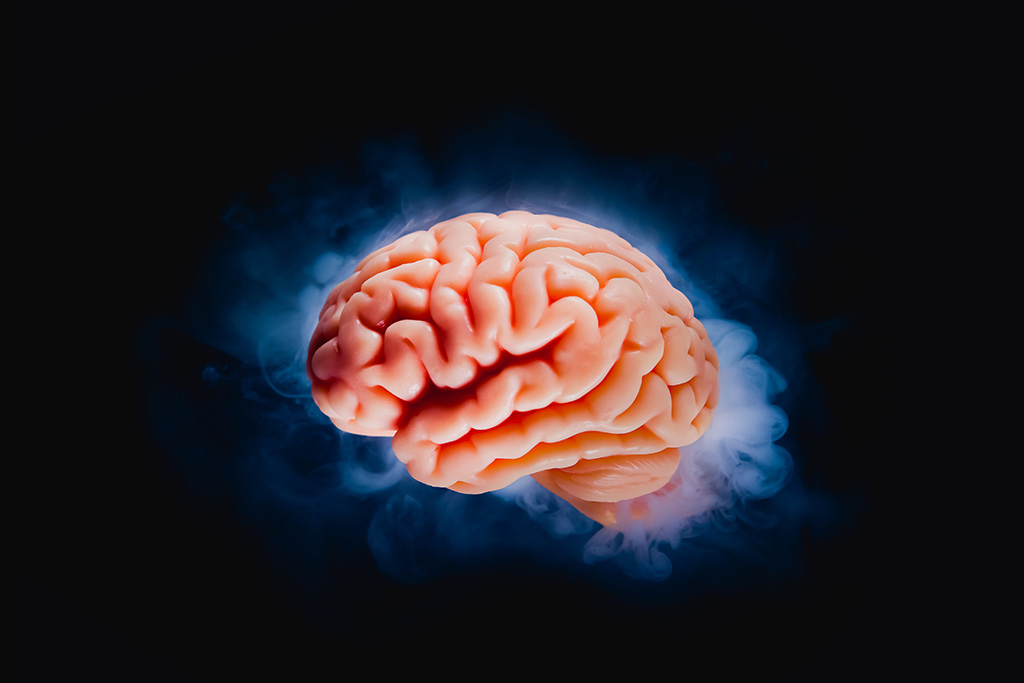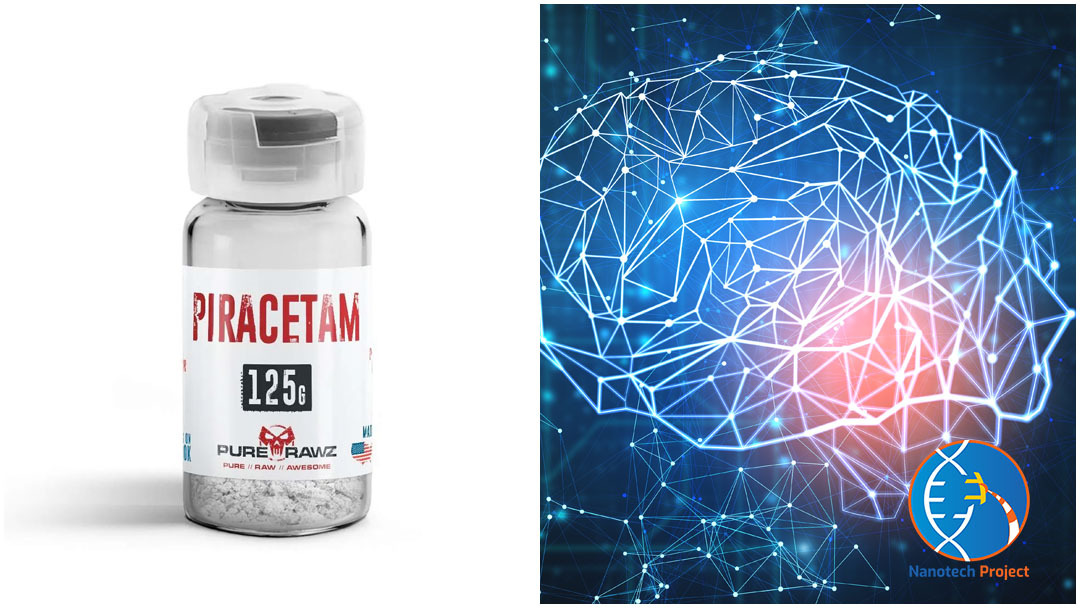Piracetam is one of the most popular nootropic drugs. It is also one of the oldest. Piracetam holds the distinction of being the first-ever supplement to be labeled a nootropic, a type of drug that facilitates learning, enhances memory, and boosts general cognitive functions.
However, despite its stellar reputation, many questions remain unanswered about the benefits, side effects, and overall safety of piracetam. That’s because different studies have concluded conflicting results regarding this supplement’s safety and efficacy in human users.
All that confusion ends right here. In this article, we’ll shed light on what some of the latest research has to say about piracetam. We’ll also discuss how this supplement works, how much piracetam you can safely take on a daily basis, and more. Read on to know everything about piracetam.
What is Piracetam?

Piracetam is one of the best nootropics out there.
It’s is a synthetic derivative of the neurotransmitter gamma-Aminobutyric acid (GABA). GABA is responsible for blocking specific brain signals and reducing activity in your nervous system. This helps it produce a calming effect, watering down feelings of fear, stress, and anxiety.
However, piracetam affects your body in a different way than GABA. Instead of impeding certain brain signals and decreasing activity in the nervous system, piracetam works by restoring the fluidity of your cell membranes, wherever they are in your body.
Research has found that its approach works. Apart from boosting your brain function, piracetam helps dyslexia patients by enabling them to read and learn better. This nootropic supplement may also protect your body against myoclonic seizures (sudden involuntary muscle spasms).
That’s not all. Piracetam may also protect against Alzheimer’s by preventing the clumping-up of amyloid-beta peptides (responsible for causing the disease). Human studies have also indicated that this supplement can enhance mental performance in older adults with Alzheimer’s disease.
How Does Piracetam Work?

Piracetam works by improving the functionality of the neurotransmitter acetylcholine. Acetylcholine is the nervous system’s chief neurotransmitter, responsible for expanding blood vessels, slowing heart rate, smoothing muscles, and increasing bodily sections.
Aside from that, piracetam helps cells in the blood vessels and the brain function better by restoring the elasticity of their membranes. This is crucial because cells with inelastic membranes do not function as well and might expose the body to various diseases.
Is Piracetam Legal?
Piracetam is legal in Europe, though its legal status differs from country to country. Some countries such as Ukraine, Belgium, and the Czech Republic don’t require you to have a prescription to acquire it. Others, including Italy, Spain, Sweden, and others, require a prescription to buy it.
Piracetam is legal in the United States, too. However, it’s yet to be approved by the US Federal Drug Authority (FDA), which rejected an application to market piracetam as a supplement in 2004. Still, you can possess it without a prescription or license.
Benefits of Piracetam

Proven benefits of piracetam include enhancing brain function, reducing dyslexia symptoms, and protecting against sudden involuntary muscle spasms or seizures. The nootropic supplement has also been shown to reduce inflammation, provide pain relief, and reduce Alzheimer’s symptoms.
Let’s look at these benefits in detail:
1) Reduces Cognitive Decline
Cognitive decline is when a person has trouble learning new things, remembering old ones, concentrating, or making decisions that affect their lives. The US CDC warns that cognitive decline is one of the most noticeable symptoms of dementia and Alzheimer’s disease. [R]
Multiple studies have established a strong link between a high dose of piracetam and a reduction in the rate of cognitive decline. Older adults with cognitive decline experienced reduced symptoms upon consuming 1,600mg of piracetam thrice a day over 6 weeks. [R]
2) Reduces Breath-Holding Spells
Breath-holding spells are short periods when young children stop breathing for up to 60 seconds. These spells are reflux (they occur naturally), but they can be dangerous. A breath-holding spell may lead to fainting, seizure, a stiff body, or twitching muscles.
The good news is that piracetam has been found to be ‘remarkably effective’ in decreasing breath-holding spells in infants. When given at feasible dosages, this nootropic supplement brings down the episodes to almost zero. And that too with no apparent side effects. [R]
3) Boosts Brain Function
Your brain works throughout your life to regulate your body functions. It also helps you make sense of and interact with the world around you. Maintaining a healthy brain is thus crucial if you want to work, play, and rest as you please. Which is precisely what piracetam does.
Studies indicate that by making the cell membranes in the brain more fluid, piracetam makes it easier for cells to send and receive information. It also increases the blood supply to your brain and helps it consume more glucose and oxygen. All these factors help your brain function better. [R] [R]
4) Fights Inflammation
Inflammation is a tool your body uses to fight and heal diseases. Still, persistent, low-level inflammation may increase your risk of developing various severe conditions, including DNA damage, diabetes, cancer, kidney disease, and heart problems.
That’s where the bad news ends. Animal studies have shown that piracetam could fight inflammation in three ways – by neutralizing free radicals that cause cell damage; by suppressing the production of molecules that trigger inflammation; and by reducing the pain caused by inflammation. [R] [R] [R]
5) Reduces Dyslexia Symptoms
Dyslexia is a learning disorder. It affects those brain areas that process language and makes it challenging to spell, read, and learn. Symptoms of dyslexia include reading slowly or making mistakes when reading aloud, facing difficulty writing answers down, and more. [R]
Research indicates that people with dyslexia may learn and read better after taking piracetam. One study on 225 children showed that those who took 3.3 g of piracetam daily for six months started showing notable improvements in their ability to read and understand text after only 12 weeks. [R]
Side Effects of Piracetam

On the whole, there is very little clinical data about the side effects of piracetam. Neither are there any official or reliable scientific studies linking this nootropic supplement to adverse side effects when taken by healthy adult users.
However, a few preliminary studies do shed light on some of its potential side effects. For instance, in one study where patients took 4800 mg of piracetam for two months [R], some of the side-effects commonly reported include:
- Anxiety
- Insomnia
- Depression
- Nervousness
- Motor tremors
- Excessive sweating
Another study on 60 elderly patients with cognitive impairments and brain damage reported patients complaining about insomnia, dizziness, disrupted sexual activity, and overstimulation. These claims about the side effects of piracetam are in line with anecdotal evidence from its users. [R]
Piracetam Dosage

There are no officially sanctioned dosage guidelines for piracetam. That means you’d be better off with the advice of your doctor about how much piracetam you can safely take per day. Having said that, the following doses [R] have been researched in scientific studies:
For Adults
Adults could take piracetam by mouth or by the needle. While they could take piracetam orally at home, only healthcare professionals should administer this nootropic supplement by syringe, as the risks associated with self-injection outweigh the benefits.
By mouth:
- For vertigo: 800 mg; 3times/day; 1 – 8 weeks
- For epilepsy: 9.6 to 24 g; 1time/day; up to 18 months
- For movement disorder: 2.4 g; twice/day; 4 weeks
For Children
Children as young as 6 months may start taking piracetam to fend off breath-holding attacks. You may also choose this nootropic for your child if she has dyslexia. Following piracetam doses for children have been researched in scientific studies:
By mouth:
- For breath-holding attacks: 40 mg/kg; once/day; 2-3 months in children aged 6 – 36 months
- For dyslexia: 3.3g; once/day; at least 3 months in children 7 – 14 years of age
Keep in mind that we aren’t doctors and this isn’t medical advice. Furthermore, there are no official dosage guidelines for piracetam. We, therefore, suggest that you turn to your doctor before you starting taking this supplement.
Frequently Asked Questions

Is it safe to take piracetam?
Piracetam is considered safe with minimal risk of any adverse effects. Long-term studies on the safety and efficacy of this nootropic supplement have found that doses of up to 24 g daily have had no side effects on the users.
What is piracetam prescribed for?
Piracetam is prescribed for seizure disorder (epilepsy), breath-holding attacks, dizziness or vertigo, dyslexia, and a movement disorder caused mainly by antipsychotic drugs.
Conclusion

Piracetam is one of the safest nootropic supplements out there. Sure, its users have reported various side effects after using this drug, but there aren’t any large-scale scientific studies that could prove those claims. In contrast, we have researchers on record saying that piracetam is safe.
Any doubts you may still have about this drug’s safety should be washed away by the fact that the European Medical Agency (EMA) has approved it to treat cognitive impairment. This has made piracetam one of the few nootropics that can be ordered over the counter in the EU.
